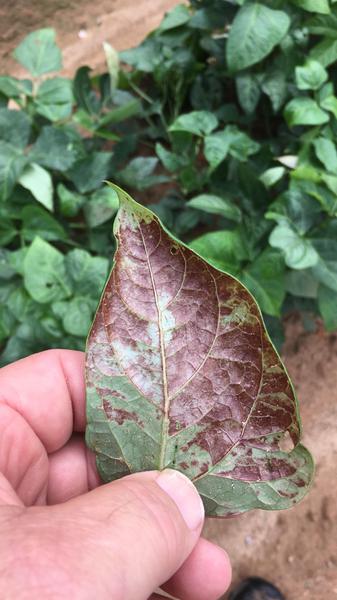Introduction
Sunscald is caused by bright sunlight on a wet leaf after exposure to high temperatures. Symptomology typically appears as rusty discoloration on the underside of the leaf. Sunscald typically has no impact on soybean yield.
Symptoms
Symptoms usually appear on the underside of the leaf with reddish-brown veins and sometimes rusty coloration extending into the leaf tissue. Typically only a portion of the leaf shows symptoms. Sunscald usually appears on the upper trifoliate leaves which are not shaded.
Management
There is no management for sunscald. Proper identification will be key to make sure this is not Cercospora leaf blight, which can be confused with sunscald; however, the symptomology associated with Cercospora typically appears as purple spots on the top surface of the leaves. Sunscald typically does not impact soybean yield.
Additional Resources
Discolored soybean leaves: sunburn, cercospora, or what? (University of Missouri)
Publication date: Aug. 4, 2020
Reviewed/Revised: Aug. 1, 2025
N.C. Cooperative Extension prohibits discrimination and harassment regardless of age, color, disability, family and marital status, gender identity, national origin, political beliefs, race, religion, sex (including pregnancy), sexual orientation and veteran status.


